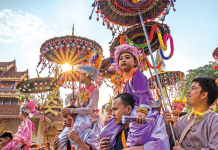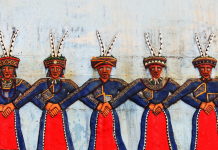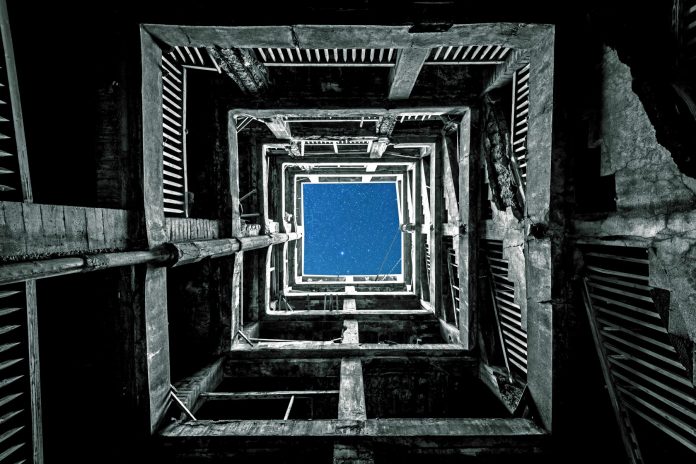
And the memories of former resident Doutoku Sakamoto
by Jordy Meow
In Gunkanjima, ghosts live on in the memories of former inhabitants of the fortress island. Gunkanjima, also known as Battleship Island, is an abandoned metropolis southwest of Nagasaki Prefecture, taking its name from its appearance as a Tosa warship used by the Imperial Japanese Navy. Its true name however, is Hashima, and in July 2015 the area was inscribed as a UNESCO World Heritage Site along with 22 other industrial sites of Japan’s Meiji Industrial Revolution.
A dark, dark past
But its history is far darker than that, and what lurks behind the sea walls of this fortress island is a plot thicker than James Bond’s Skyfall (2012) which propelled it to popular culture. Hashima was bought by Mitsubishi in 1890 after coal was discovered on the island in the early 1800s. As coal output increased, so did its population, made up mostly of coal miners and forced labour from Korea and China who were direct victims of the second world war.
This was Japan’s effort to rapidly industrialise their country and to keep up with Western standards through steel, shipbuilding and coal mining – but at the cost of human lives. In 1941, Hashima produced its greatest amount of coal as a result of heavy demand from the war, but it also resulted in the deaths of hundreds of labourers who worked with bare minimum protection and in dangerous conditions as far as one kilometre underground in temperatures over 45 degrees Celcius.
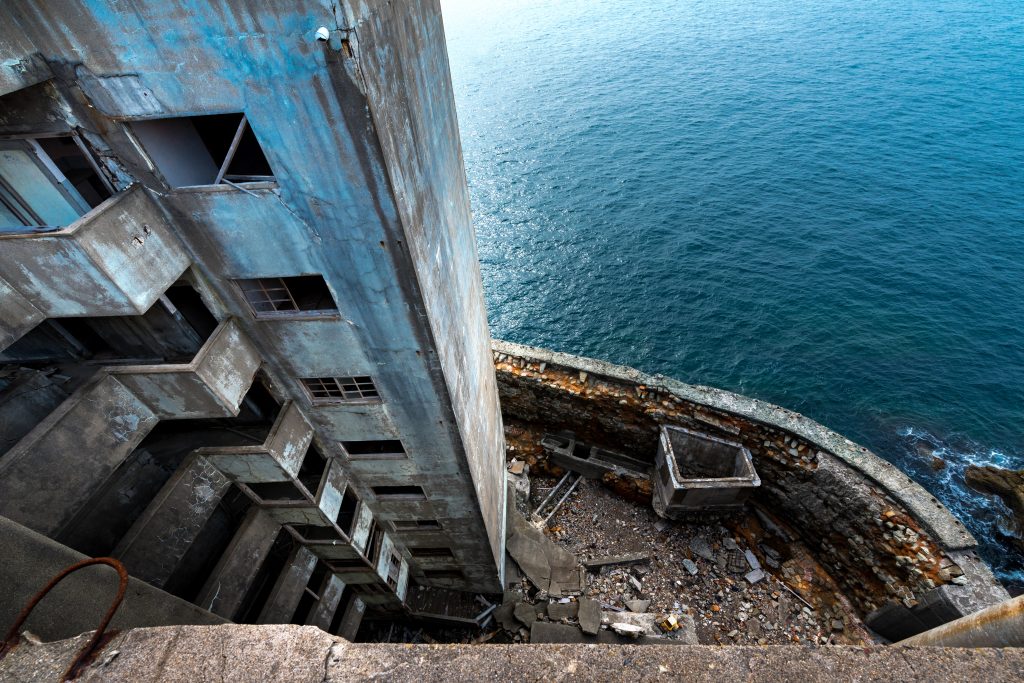
To house the workers, the first concrete high-rise apartment was built in 1916 and named Block 30. At its peak in the 1960s, the island had about 5,300 residents at a density of 7,300 people per square kilometre – nine times higher than that of Tokyo’s density at the time.
“Most of the islanders were miners living in two-room apartments, from 63 to 112 square metres. For a family of five that was cramped,” explained former resident Doutoku Sakamoto, who is also the Chairman of “The Way to World Heritage – Gunkanjima” Association that helped put Gunkanjima onto the UNESCO World Heritage List.
When the coal ran out and demand shifted to oil, the output diminished along with the population of the island. The mines were closed in 1974 and Gunkanjima was duly abandoned.
A maze of concrete
Today, Gunkanjima is open for public tours but only within a selected section built with boardwalks and observation decks. There are barricades with “off-limits” signs and tourists are told to keep to designated paths. Before it opened to the public in 2009, visitors were mainly former residents or ruin explorers documenting the island’s crumbling walls and emptied apartments.
With floors covered with wood pieces, scrap iron and derelict furniture, the island could be mistaken for an apocalypse, with some areas looking completely trashed. The island is a labyrinth of avenues, streets and lanes with buildings connected by footbridges. Plunged in a maze of stairs and corridors, some buildings are so dense that they block out the sunlight.
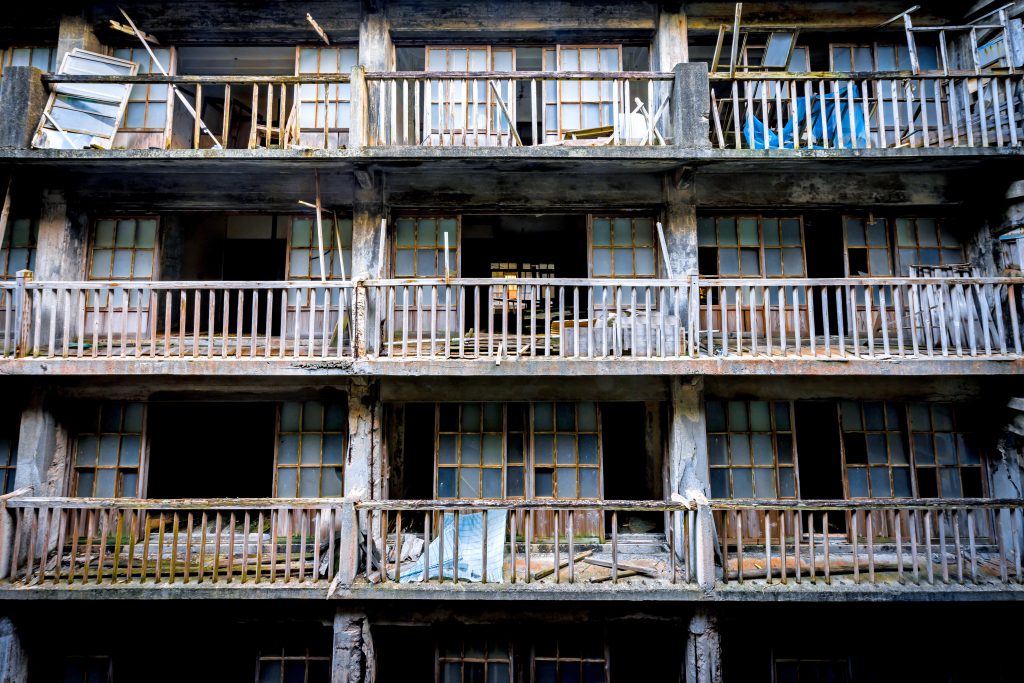
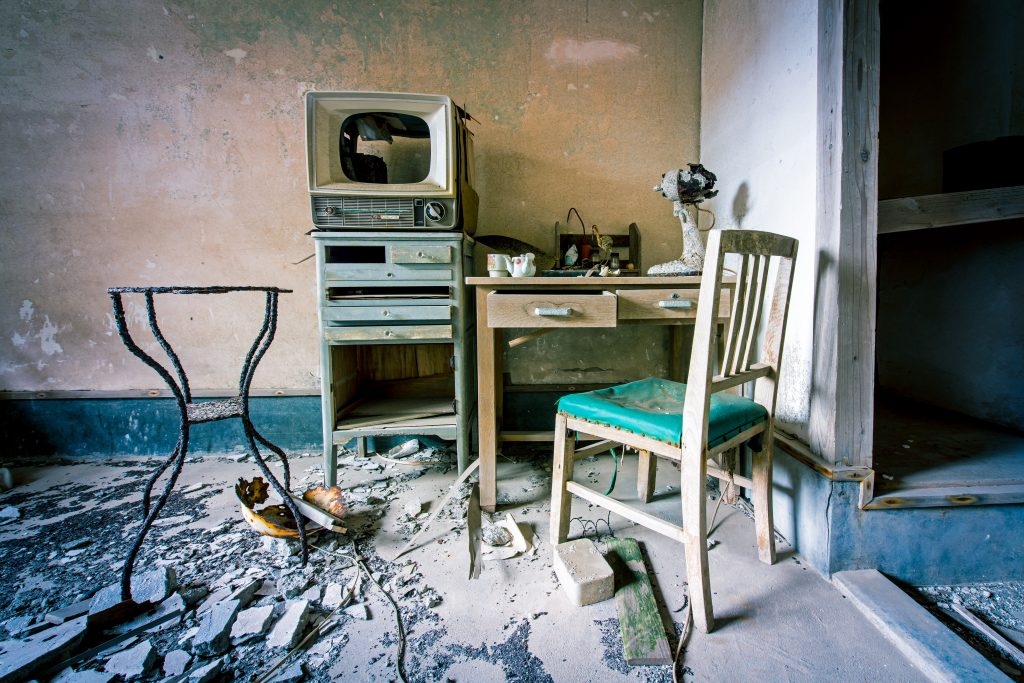
The most impressive of all is Block 65, a post-apocalyptic U-shaped building of 317 apartments housed over nine floors. From afar, it looks like a cemetery of haunted houses piled atop each other. But for former residents like Sakamoto, it was considered an upgrade. “Before I moved to Block 65 I was living in Block 16-17. There, everyone shared the same bathroom and it was so dark that we had to switch the light on even during the day,” he explains.
Built in 1945, Block 65 is slowly but surely crumbling into rocks, the concrete made from seawater giving way to the humidity and corrosion of steel reinforcement. “The buildings decay slowly but the most disturbing thing is the very fragile condition of the dyke that surrounds and protects the island,” says Dakamoto. “If this wall collapses, the rest will follow immediately. So the island can disappear in an instant after a typhoon and it is imperative that we repair this dyke as soon as possible.”
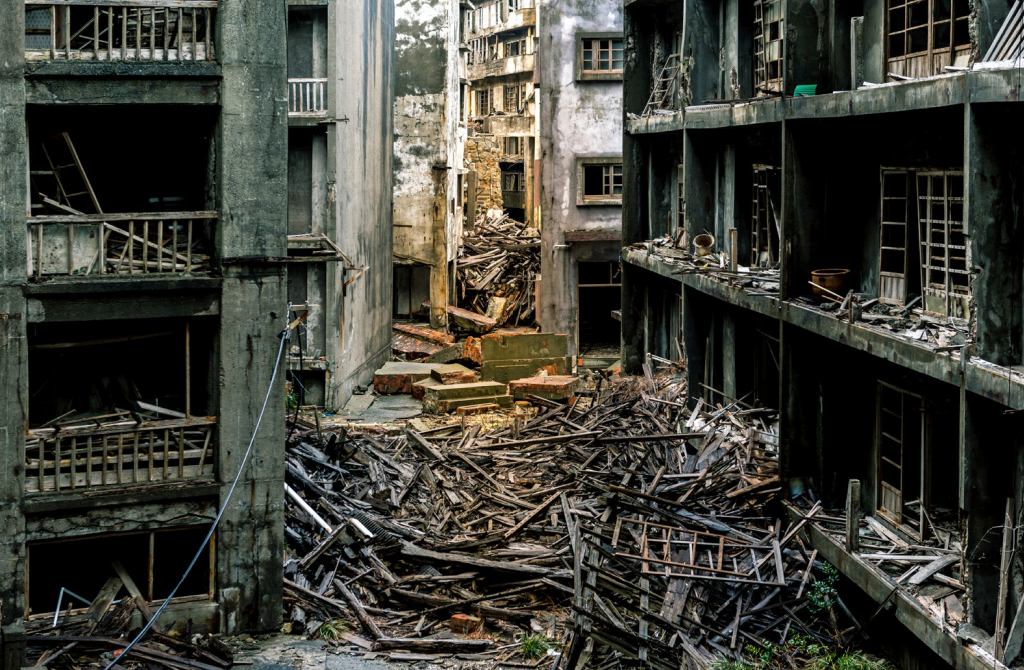
Reality hits home
At the peak of its population, Hashima was a true megalopolis, completely urbanised with apartment buildings, two schools, a hospital, a gymnasium, a movie theatre, public baths, shops, a temple, a pachinko, bars and even a brothel.
Sakamoto was born on the island in 1954 after the second world war and says his efforts to put Hashima on the UNESCO World Heritage list is the only way to convey its history and assert its status as a furusato or hometown. He has fond memories of an active community, where much of life happened on the rooftops of the high-rise buildings.
“It was comforting to know that there was always someone above our heads. In the summer at night, you would see high school students, grandfathers, grandmothers, and of course, guitar players on the rooftops. For us who were living in such small places, walking on those roofs gave us a feeling of freedom and a taste of huge spaces.”
Even his schooling days in the primary and middle school – another landmark of the island – was recalled with fondness. Built in 1958 on reclaimed land, typhoons have left its mark on the damaged building over the years, but blackboards, abacuses, laboratory equipment, wooden desks and chairs can be still be found inside.
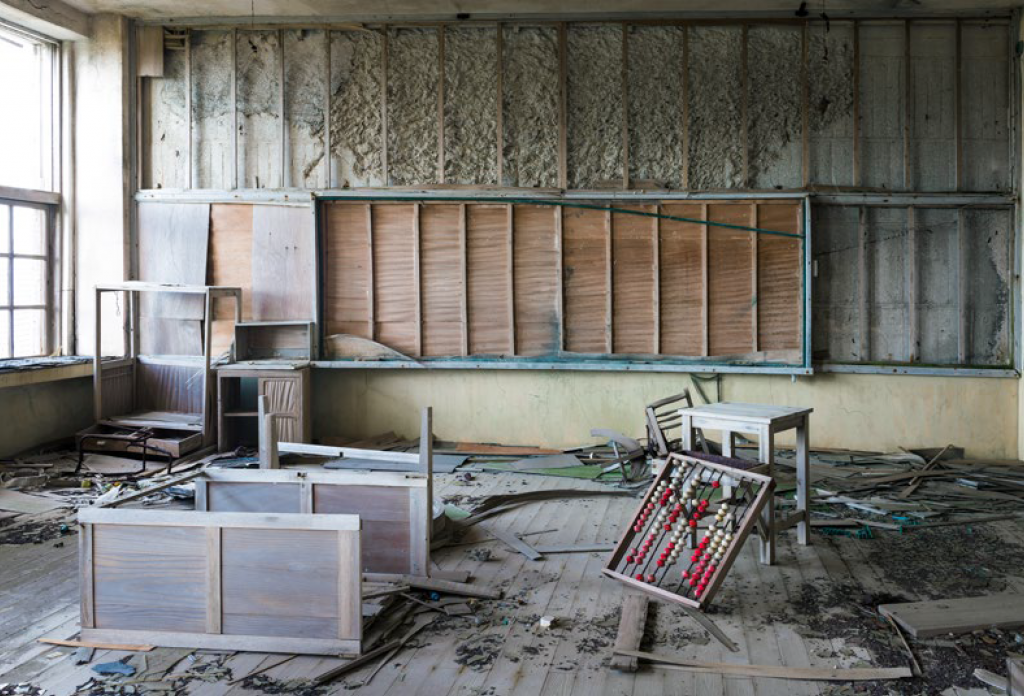
“I will always remember our science teacher, Hikawa-sensei. We nicknamed him “Kame-chan”, The Turtle. He was around 50 years old but his classroom was always filled with laughs. He was not only a science teacher but was responsible for finding jobs for the students. Back in the day, even the younger ones who weren’t in high school yet had to work outside of classes.”
The future of Gunkanjima
Putting Gunkanjima on the UNESCO World Heritage List is not without its controversy and for tourists coming to visit, Sakamato doesn’t necessarily think it may be a positive image for its former inhabitants either.
“We hope that tourists will think about the cause and the existence of this place. I would like them to investigate the history of the island before coming and taking pictures. It is important to think about the lives of those who worked and lived there,” he says.
“I want visitors to understand the message that this island delivers – the economic, environmental and social problems that they express. These ruins are the collateral damage of the ego of men – they aren’t beautiful.”
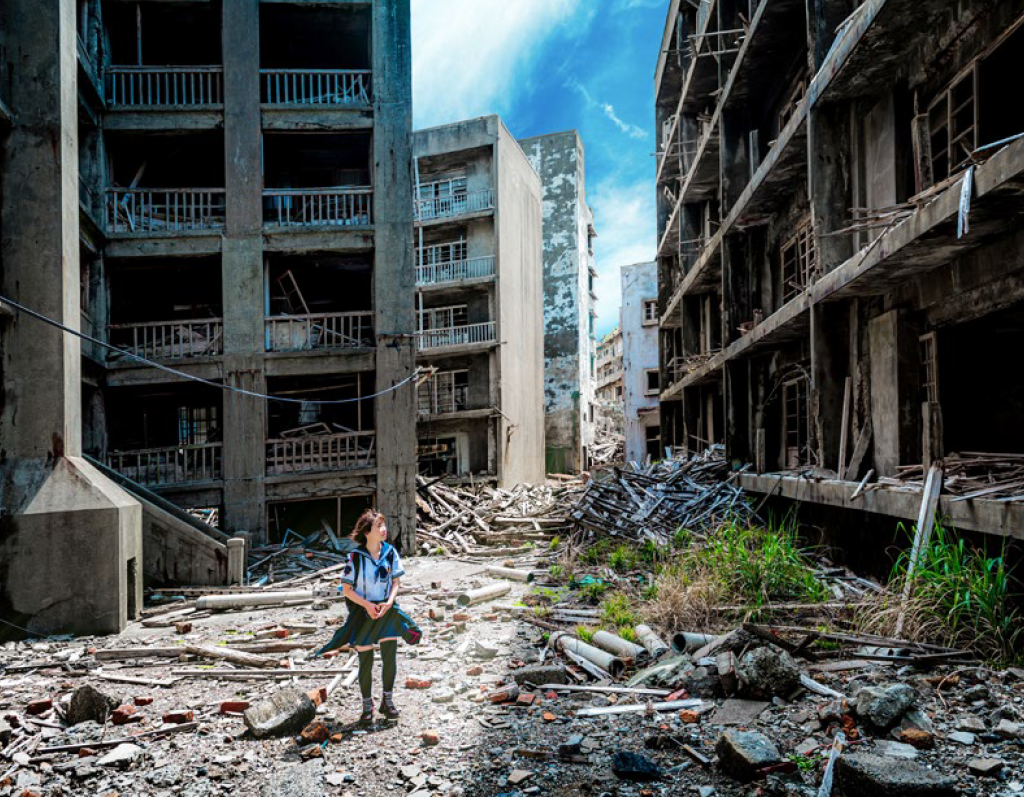
For more stories and photos, check out Asian Geographic Issue 115.



![The Road to Independence: Malaya’s Battle Against Communism [1948-1960]](https://asiangeo.com/wp-content/uploads/2021/07/WhatsApp-Image-2021-07-26-at-11.07.56-AM-218x150.jpeg)
